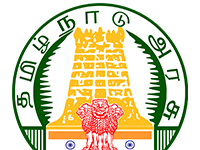Aadhaar for cows and buffaloes: India is developing world’s largest livestock database.

A numerical database just like Aadhaar cards, which carry a 12-digit number that establishes the unique identity of every citizen of India, will now be available for cows and buffaloes.
This unique identification number that is currently being developed will track the population of livestock. The Information Network for Animal Productivity and Health (INAPH) is being developed by the National Dairy Development Board (NDDB).
Just like Aadhaar cards, INAPH will also assign a unique identification number to each animal, alongside a host of other related data that will help in managing the country’s vast livestock resources. The INAPH is being touted as the world’s largest existing database of animals.
The first phase of the project would involve taking stock of India’s 94 million “in milk” female cow and buffalo population. According to an Indian Express report, once the female breed of milk cattle is covered; all the other bovines, such as males, calves, stray animals, etc will be counted.
During the process, every animal will be provided with an ear tag that would contain their own 12-digit UID. The INAPH will contain data on the bovines’ species, breed, pedigree, and information related to calving, milk production, vaccination, and the like.
INAPH, which will be known as Pashu Aadhaar, is being introduced with the aim of enhancing traceability of our livestock and their products, such as milk or meat. This will also help farmers and animal husbandry officials devise better strategies to manage livestock in the country. In fact, one of the major causes behind zoonotic diseases is the difficulty faced in identifying and tracing affected animals.
This, in turn, acts as one of the main obstacles while tapping global markets for indigenous livestock products. Therefore, to match global sanitary and phytosanitary standards, a system like INAPH that could provide a comprehensive animal information system, was necessary. This way, we would be easily able to demarcate between products obtained from healthy animals from the ones obtained from diseased animals.
As of now, about 22.3 million buffaloes and cows have got their UIDs and their data have been uploaded on the INAPH database. Once this step is complete, officials will have to leverage this data for better management of bovines that would ensure improved productivity and livestock product quality.






























